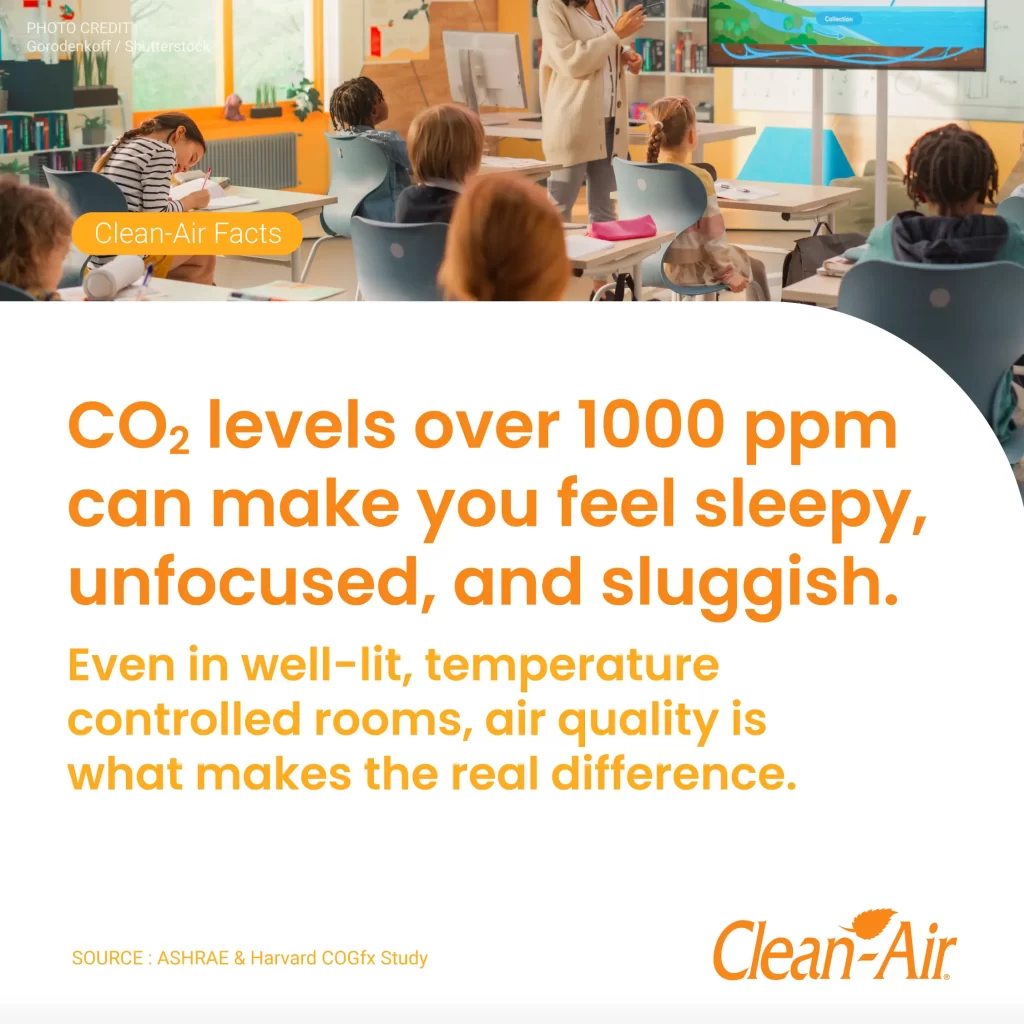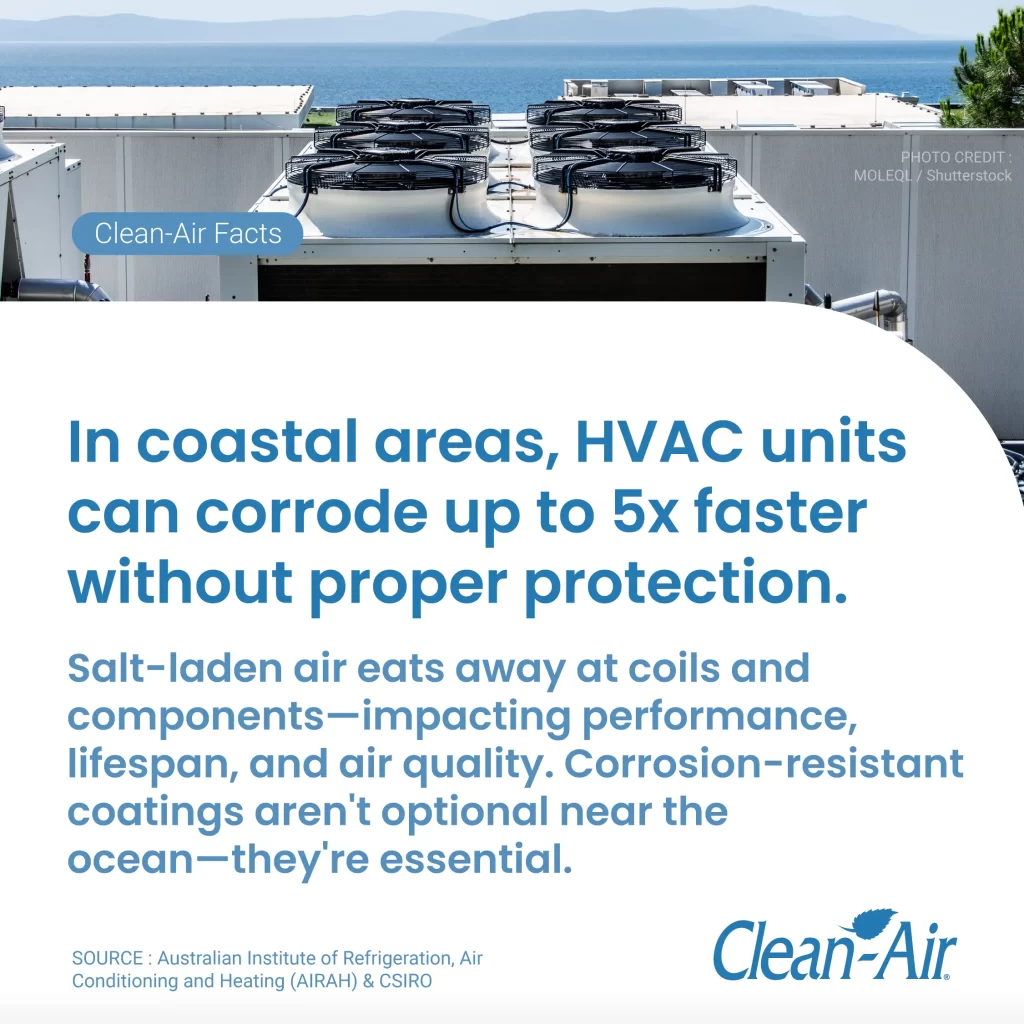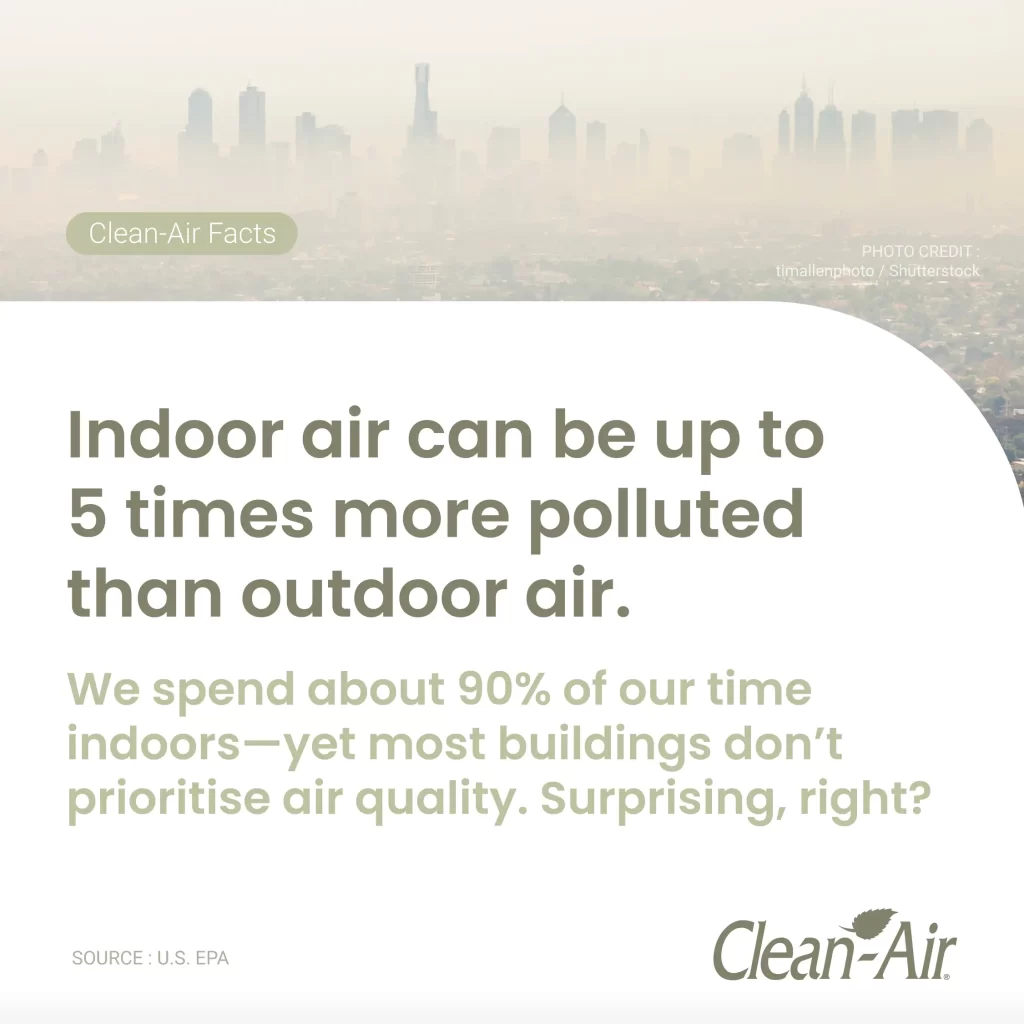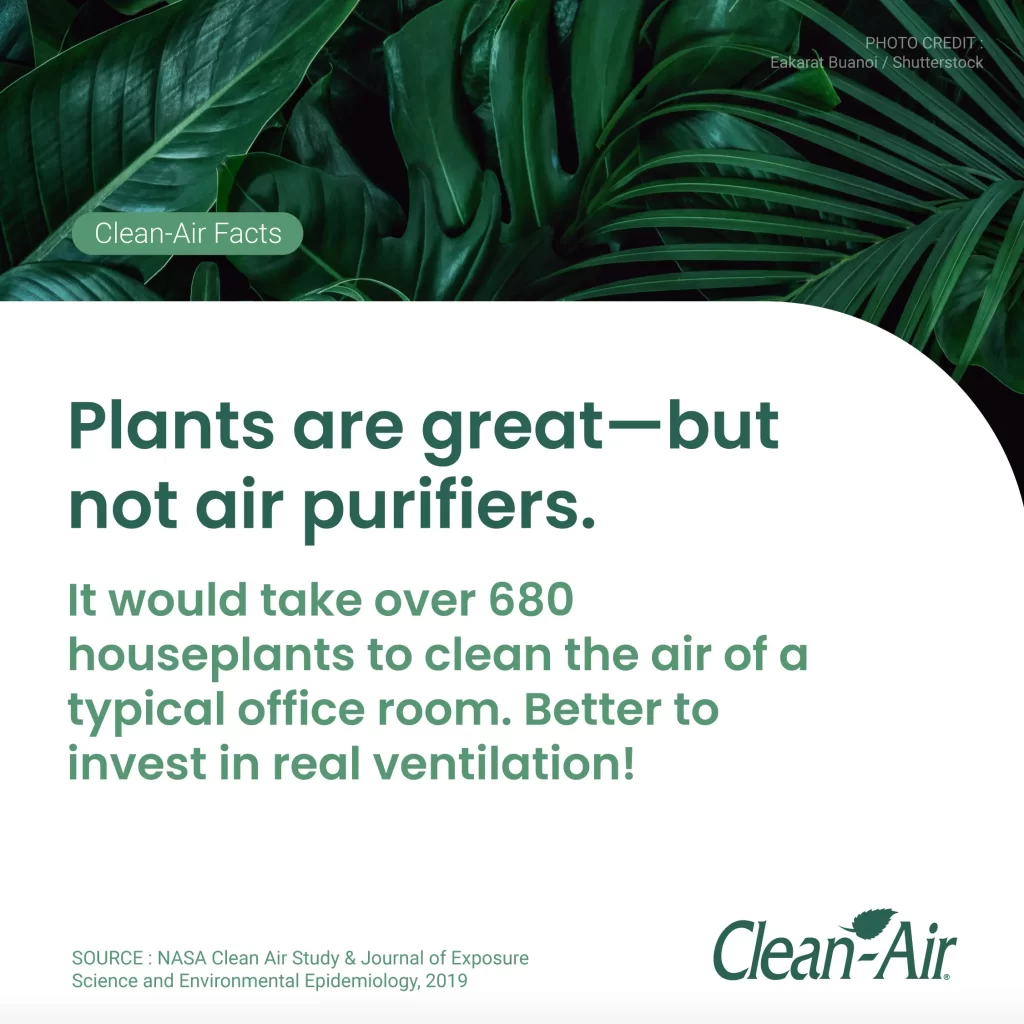Welcome to the Clean-Air Facts Series — a weekly dose of bite-sized, science-backed insights that reveal the hidden impact of the air we breathe indoors.
Each week, we’ll highlight a new fact about air quality, HVAC systems, environmental conditions, and the role clean air plays in our health, productivity, and infrastructure. Then, every 5 weeks, we’ll round them up into an article like this one — a simple way to recap and share key takeaways with your team, clients, or network.
In this first edition, we’re covering five core facts — from the dangers of high CO₂ indoors and Sick Building Syndrome, to coastal HVAC corrosion, surprising indoor air pollution stats, and whether houseplants really clean the air.
Let’s dive in.
Fact 1 : CO₂ Levels
CO₂ levels over 1000 ppm can make you feel sleepy, unfocused, and sluggish.
Even in well-lit, temperature controlled rooms, air quality is what makes the real difference.
SOURCE: ASHRAE & Harvard COGfx Study

You might think your space feels “fine” — it’s well-lit, the temperature is comfortable, and the noise levels are low. But if CO₂ levels are creeping up, your brain feels it long before you do. Even moderate CO₂ buildup in meeting rooms, offices, or classrooms can reduce cognitive function, impair decision-making, and trigger fatigue — especially in the afternoons. This isn’t just about comfort. It’s about performance, wellbeing, and long-term health.
Modern buildings need more than just good insulation. They need smart ventilation.
🧠 Better air = better thinking.
Fact 2 : Coastal Corrosion
In coastal areas, HVAC units can corrode up to 5x faster without proper protection.
Salt-laden air eats away at coils and components-impacting performance, lifespan, and air quality. Corrosion-resistant coatings aren't optional near the ocean-they're essential.
SOURCE: Australian Institute of Refrigeration, Air Conditioning and Heating (AIRAH) & CSIRO

Near the coast? 🌊 Your HVAC system is working overtime—against salt.
In coastal environments, HVAC units can corrode up to 5 times faster without proper protection. Salt-laden air is highly corrosive—it penetrates outdoor units, attacks coils, and slowly breaks down components. Over time, this doesn’t just shorten your system’s lifespan—it quietly reduces energy efficiency and compromises indoor air quality.
⚙️ What’s the fix? ✅ Corrosion-resistant coatings designed specifically for high-salinity zones. These aren’t nice-to-haves. They’re non-negotiable if you want to future-proof your assets. 🔧
Fact 3 : Sick Building Syndrome
Poor indoor air makes employees 50% more likely to have "sick building syndrome.
Headaches, fatigue, dry skin, brain fog... sound familiar? It might not be your workload -it might be the air.
SOURCE: Harvard T.H. Chan School of Public Health

🧠 Clean air supports clear thinking.
💼 Healthy buildings support healthy teams.
Sick building syndrome is more common in poorly ventilated offices, especially those with neglected HVAC systems or high CO₂ levels. And it doesn’t just affect comfort—it affects productivity, cognition, and overall wellbeing.
Fact 4 : Indoor Air Pollution
Indoor air can be up to 5 times more polluted than outdoor air.
We spend about 90% of our time indoors-yet most buildings don't prioritise air quality. Surprising, right?
SOURCE: U.S. EPA

🫁 Clean indoor air isn’t a luxury—it’s a health standard.
🏙️ Indoor air can be up to 5× more polluted than outdoor air.
We spend 90% of our time indoors—at work, at home, in schools.
Dust 🧹, VOCs 🧪, CO₂ 🫧, and mould 🦠 can build up silently in sealed spaces—especially in buildings that don’t prioritise 💨 ventilation or 📊 air monitoring.
Fact 5 : Plants as Air Purifiers
Plants are great-but not air purifiers.
It would take over 680 houseplants to clean the air of a typical office room. Better to invest in real ventilation!
SOURCE: NASA Clean Air Study & Journal of Exposure Science and Environmental Epidemiology, 2019

🪴 Plants are great—but not air purifiers. Despite the myth, indoor plants don’t significantly improve air quality in real-world settings. You’d need hundreds of them per room to match the impact of a properly maintained HVAC system.
Plants are great for mood, aesthetics, and reducing stress—but for clean air, you need ventilation, filtration, and smart IAQ strategies.
🌿 Nice to have.
🌬️ Not the solution.
We hope you’ve enjoyed this first round of Clean-Air Facts! Each one highlights how air quality affects our health, comfort, and the performance of HVAC systems — often in ways that go unnoticed.
Follow our LinkedIn page to catch the next fact in the series each week.
Got questions or concerns? Our team at Clean-Air specialises in HVAC hygiene, system assessments, and remediation — especially around CO₂ management, indoor pollutants, SBS risks, corrosion, and more.
